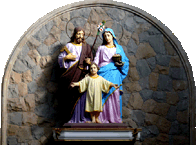|
A native tree of India which is extensively found throughout the country. It is a cultivated tree, renowed for its quick growth, low-maintainance and adaptability.
Leaves shed between March and April, and flowers appear around April-May. It has beautiful purple and white flowers which can be seen throughout the year. The seeds of this tree are known to possess poisonous properties. When pounded and roasted, the seeds can be utilized as fish poison.
From ancient times, the twigs from this tree are used as a tooth brush. Karanja is a herbal medicine used in Ayurveda which predominantly is used in treating skin diseases. The oil from this tree is not edible but can produce bio-gas which is extensively used in villages as a substitute for diesel and to run power grid systems to run water pumps. The timber of Karanj is not durable or useful.
Due to its extensive network of lateral roots, and its ability to fix atmospheric nitrogen, this is a preferred species for controlling soil erosion and binding sand dunes. Since it tolerates moderate levels of salinity, it is an ideal candidate for recovering a variety of wastelands such as saline soil reclamation. It is also used in reforestation of marginal land.
Grass normally grows beneath the tree so it has been planted to provide shade in pastures. It is also grown as a windbreak and shade provider for tea plantations in Sri Lanka.
The incorporation of leaves and the presscake into soils improves fertility. Decomposed flowers are valued in the tropics as rich nutrition for special plants, especially when grown in greenhouses. The leafy twigs are used for green manuring rice paddies, sugarcane fields and coffee plantations.
IMPORTANT: The information on this website has been compiled from reliable sources, such as reference books. It is not a substitute for medical advice or treatment. Readers should always consult their physician before using or consuming a plant for medicinal purposes.
--- Click here for information about other trees on Holy Family Church campus ---
|
